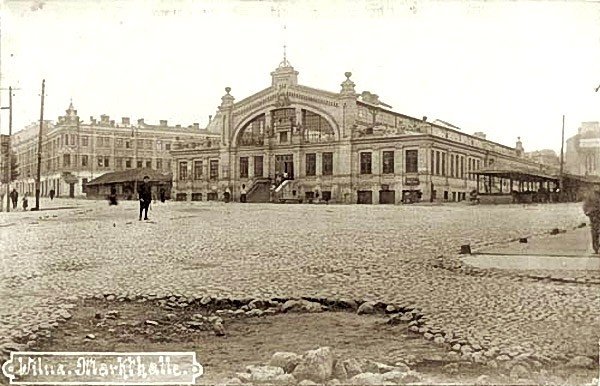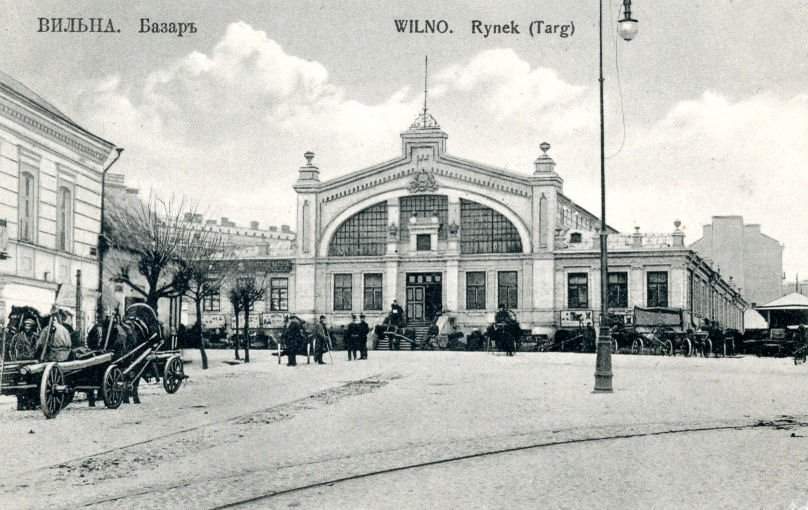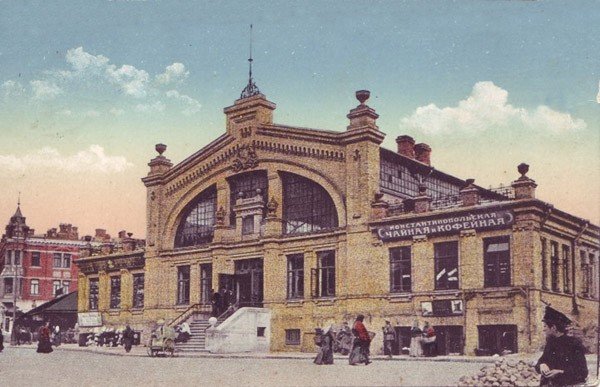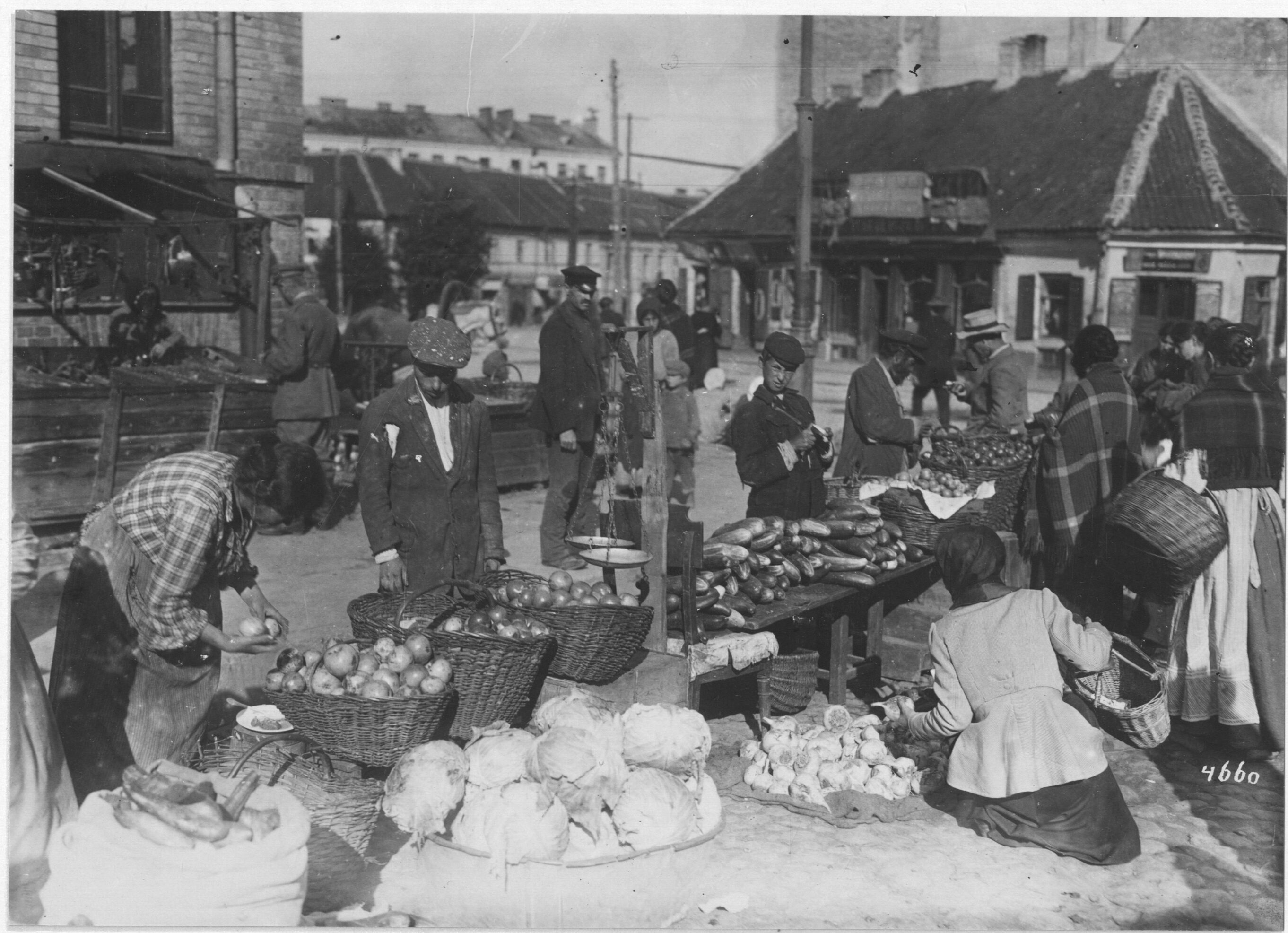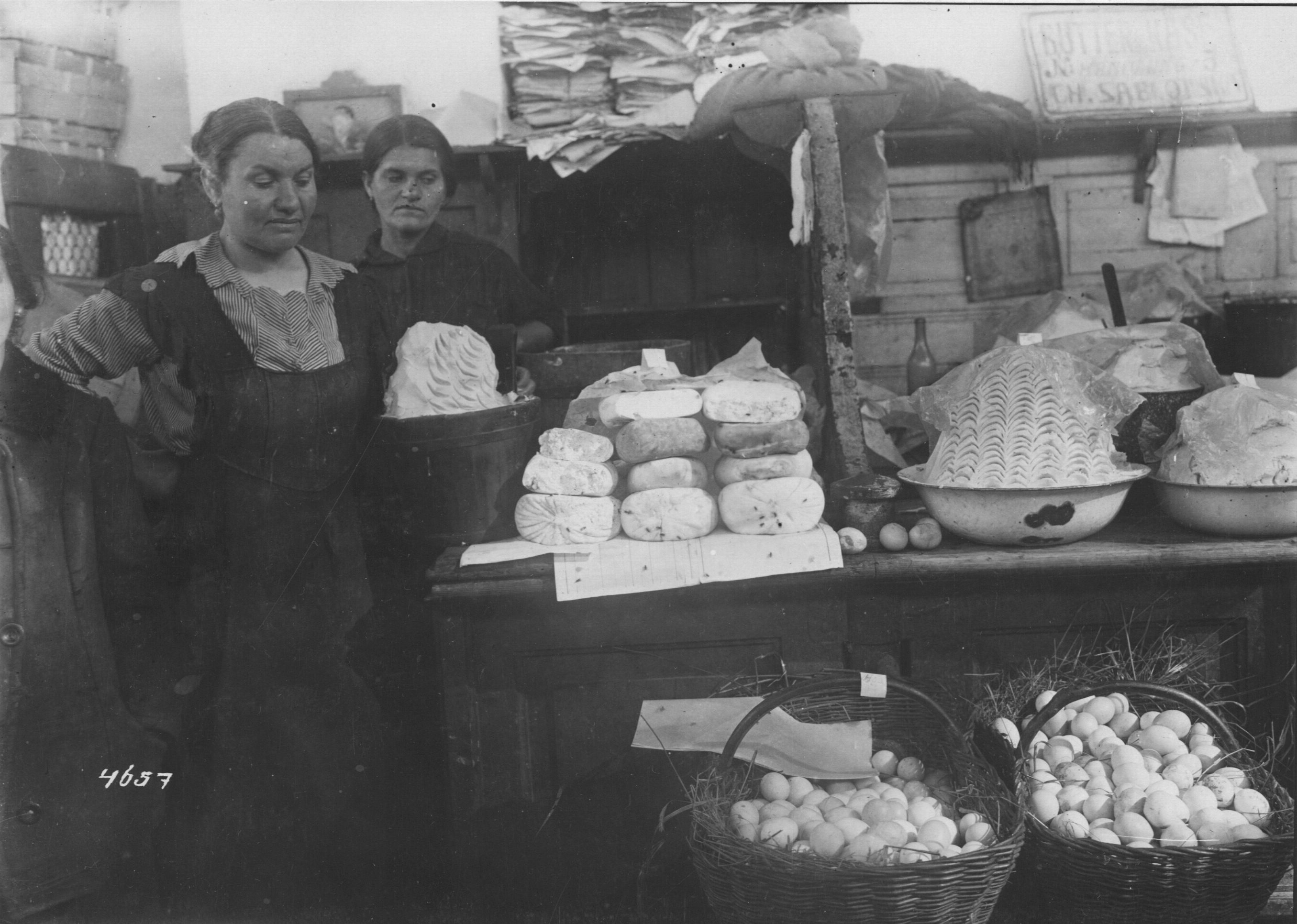Pylimo and Bazilijonų str. corner is an intersection of streets in Vilnius, where it was possible to buy a horse since the 15th century, javs, food, household and other goods. It is a strategic place that still attracts Vilnius residents, city guests, travelers and weirdos. There has been a market place here for the seventh century.
In June 1906, a new marketplace designed and built by the architect Vaclav Michnevičius began operating in Vilnius. It was named Halle market during the First World War. It is the oldest market place in Vilnius still operating. Until then, in this place for centuries - since the 1875th century. the Horse Market was operating. In XNUMX, the city authorities decided to demolish the houses of the Barefoot Carmelites monastery, which stood near the Horse Market, after which the market itself began to be called Basokaki Square or market place.

Densely built, untidy market pavilions, where there was no water supply, did not meet the requirements of hygiene and fire safety. Dilapidated trade pavilions with tin roofs marred the cityscape. The city council decided to move the market to Java market, a few hundred meters away, and build a new pavilion. in 1904 February 6 Basoks market place is closed and construction of the pavilion has started.
Halle (German: Halle) is a rectangular single-story public building with a large internal space, sometimes divided by columns or pillars, covered with a vaulted, flat or pitched roof. However, the Halle market building is more in line with the structure of the basilica structure - three naves with a wider and higher central nave. According to the observation of art critic Vidas Poškaus, Vilnius Archcathedral is actually a hall.

in 1907 In the Vilnius city plan, drawn up by the engineer Pranciškaus Valickis, there is an inscription in Polish "Halle targowe" - eventually this name became established. The City Board and the City Welfare Supervision Commission submitted projects to the city smoke, which chose the cheaper project of V. Michnevičius. The latter used metal trusses for the partitions of the Market Hall. It is the only one of its kind in the XNUMXth century. example of structures in Lithuania. Analogues of the project at that time were in Warsaw - "Hala Mirowska" and "Hala Gwardii".
in 1904 December 28 The tender for the supply of metal rafters and window frames announced by the city board was won by Petros Vileišis' company, which offered the lowest price. Mr. Vileišis had purchased a plot of land near the railway on Panerių Street (Poltavas St. at that time) with the capital he had accumulated in Russia, and built it until 1900. opened an ironworks factory.

Three types of stalls were installed in the new market place - for the sale of greens, fruits and vegetables, meat and haberdashery. In the center of the hall, high stalls for food products were placed, closed from all sides, they were locked with internal locks, and the sides and ceiling were fenced with a metal mesh to prevent theft.
The building of the Halle market has changed a little during its century of existence: the main facade has had its entrance removed after the First World War, and the side entrances have one instead of two entrances. During the Second World War, the damaged facades were plastered over and remained so until the XNUMXst century.

In 2004 - 2006, during the restoration works of the Hall, the market place was partly restored to its original appearance: the plaster covering the facades and decorative elements was removed, the central entrance stairs and windows were restored.
Sources of information:
Ambrulevičiūtė, Aelita and others. Halle: the history of the Vilnius market. - Vilnius, 2016. - 206 p.
Lukšionytė, Nijole. Central market hall. . // Compendium of historical and cultural monuments of the Lithuanian SSR. - Vilnius, 1988. - T.1, p. 299-300.
Valdas Selenis, Halle market. http://www.vilniusgo.lt/2017/09/03/hales-turgus/
http://lt1918.lt/saugykla/1917-m-rugsejis-nuotrauku-albumas-vilnius-jav-nacionalinis-archyvo-the-national-archives-at-college-park-medziaga/

